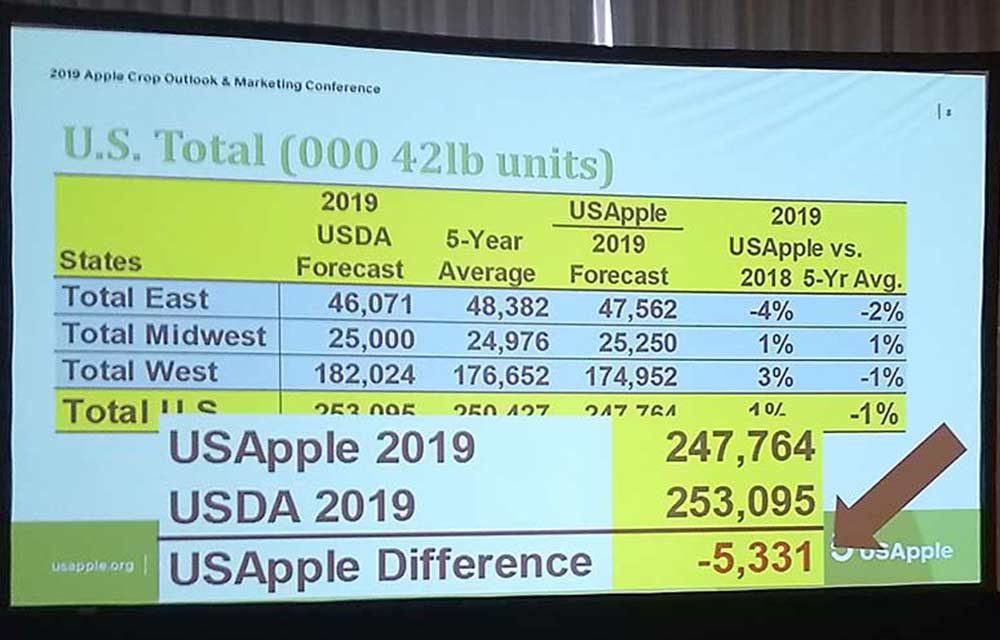Editor’s note: This story was updated August 30, 2019, to correct the percentage change in respect to previous crop years.

Day two of the 2019 Apple Crop Outlook & Marketing Conference has wrapped up, and the final estimate is in: The United States will produce 247.7 million bushels of apples in 2019.
If it holds, that will be up 1 percent from the 2018 crop and down 1 percent from the five-year average.
The Eastern states will produce 47.5 million bushels, down 4 percent from 2018 and down 2 percent from the five-year average. New York will produce 31.5 million bushels, down 5 percent from last year and equaling the five-year average. Pennsylvania will produce 11.5 million bushels, down 1 percent from 2018 and down 5 percent from the five-year average. Virginia will produce 4.5 million bushels, down 6 percent from 2018 and down 5 percent from the five-year average.
The Midwest estimate (based solely on Michigan) was 25.2 million bushels, up 1 percent from 2018 and up 1 percent from the five-year average.
The Western estimate was 174.9 million bushels, up 3 percent from 2018 but down 1 percent from the five-year average. Washington will produce 165 million bushels, up 3 percent from 2018 but down 1 percent from the five-year average. California will produce 6.5 million bushels, up 9 percent from last year and up 14 percent from the five-year average. Oregon will produce 3.4 million bushels, down 15 percent from 2018 and down 13 percent from the five-year average.
International estimates
Mexico will produce 27 million boxes of apples in 2019. Its largest production state, Chihuahua, will supply 23 million of those boxes.
Canada will produce 18.8 million bushels of apples, down 2.3 percent from 2018 but up 1.9 percent from the five-year average. Ontario will supply 7.2 million, Quebec 5.3 million, British Columbia 4 million, Nova Scotia 1.9 million and New Brunswick 145,000.
European production is estimated at 10.5 million metric tons, down 20 percent from the bumper crop of 2018 and down 11 percent from the five-year average. The decline in production will be led by the largest producer, Poland, which will produce 2.7 million metric tons this year, down 44 percent from 2018 and down 30 percent from the five-year average. Italy will produce 2.1 million metric tons, down 3 percent from 2018 but equaling the five-year average. France will increase production with 1.6 million metric tons, up 12 percent from 2018 and up 1o percent from the five-year average.
In South America, Chile will produce 1.6 million metric tons of apples, Brazil will produce 1.1 million metric tons and Argentina 608,000 metric tons.
—by Matt Milkovich






Leave A Comment